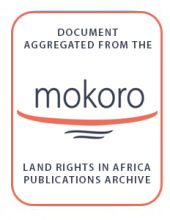Land Library
Welcome to the Land Portal Library. Explore our vast collection of open-access resources (over 74,000) including reports, journal articles, research papers, peer-reviewed publications, legal documents, videos and much more.
/ library resources
Showing items 1 through 9 of 51.Companies in the business of selling farmland to billionaires and pension funds are peddling it as a green;sustainable and socially responsible investment. This propaganda is working.
Includes overview;the problem: Development Finance Institutions (DFIs) finance a destructive model;current situation: DFIs write off loans;impacted communities face repression;human rights abuses;the role of European DFIs;recommendations.
Land is a commodity like no other. We live on it;we grow from it;we drink from it and build our futures upon it. But we don’t share it equally. The distribution of land has long defined the gap between rich and poor.
Liberia has long maintained a dual land tenure system over statutory and customary lands characterized by unclear terms of ownership. Most rural Liberians depend on common resources for their survival. These are largely communally owned;used and managed.
For decades food insecurity has been a challenge in Cameroon’s Far North region;mainly due to extreme weather and weak land legislation. Now the problem is escalating.
This report on the state of industrial oil palm plantations in West and Central Africa shows how communities are turning the tide on a massive land grab in the region.
Cameroon’s current land law appears to have two conflicting objectives: to attract investors through large-scale land concessions; while protecting biodiversity;defending local people’s rights and promoting rural development.
Money from pension funds has fuelled the financial sector’s massive move into farmland investing over the past decade. The number of pension funds involved in farmland investment and the amount of money they are deploying into it is increasing;under the radar.
GRAIN has documented at least 135 farmland deals for food crop production that have backfired between 2007 and 2017. They represent 17.5 million hectares. These are not failed land grabs, since the land almost never goes back to the communities, but failed agribusiness projects.

